How to Choose and Fit a Life Jacket Correctly
A life jacket, or personal flotation device (PFD), is the single most important piece of safety gear on any boat. It’s your best defense against drowning, cold shock, and exhaustion in the water. Yet too many boaters still leave their life jackets under the seat, unworn — or worse, they buy the wrong type altogether.
Choosing the right life jacket isn’t complicated, but it does require understanding a few key principles: proper type, fit, condition, and usage. This guide will walk you through everything you need to know to make sure every person on board — adult or child — wears a properly fitted, approved, and comfortable life jacket.
1. Why Wearing a Life Jacket Matters
Statistics don’t lie: over 80% of boating fatalities involve victims who weren’t wearing a life jacket. In many of these cases, the person fell overboard unexpectedly — often in calm weather — and didn’t have time to grab or put one on.
A life jacket buys you precious time. It keeps your head above water even if you’re injured, exhausted, or unconscious. In cold water, it slows the onset of hypothermia by reducing heat loss. And when rescuers arrive, a bright-colored, reflective life jacket makes you far easier to spot.
Wearing it before an emergency begins is crucial. Once you fall in, even the strongest swimmer can lose coordination within seconds — especially in rough water or cold temperatures. Remember the golden rule: “It won’t work if you don’t wear it.”
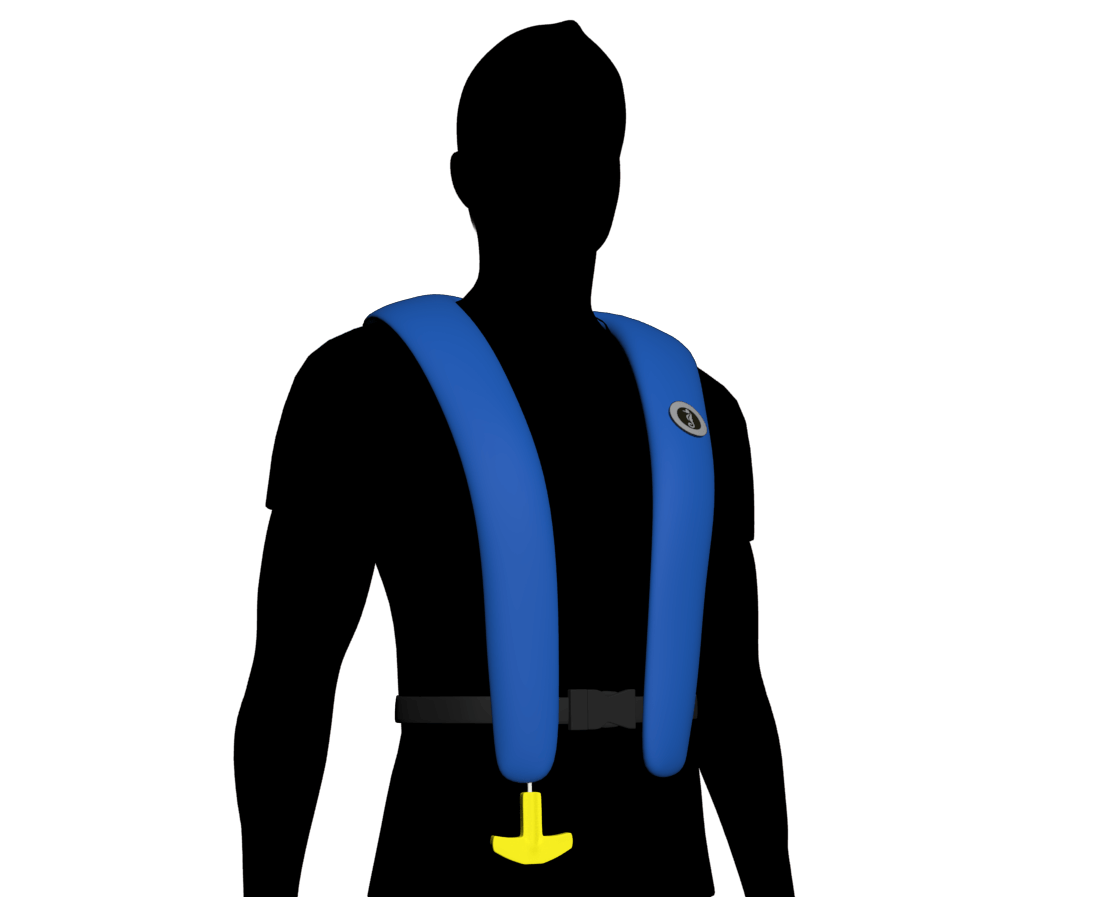
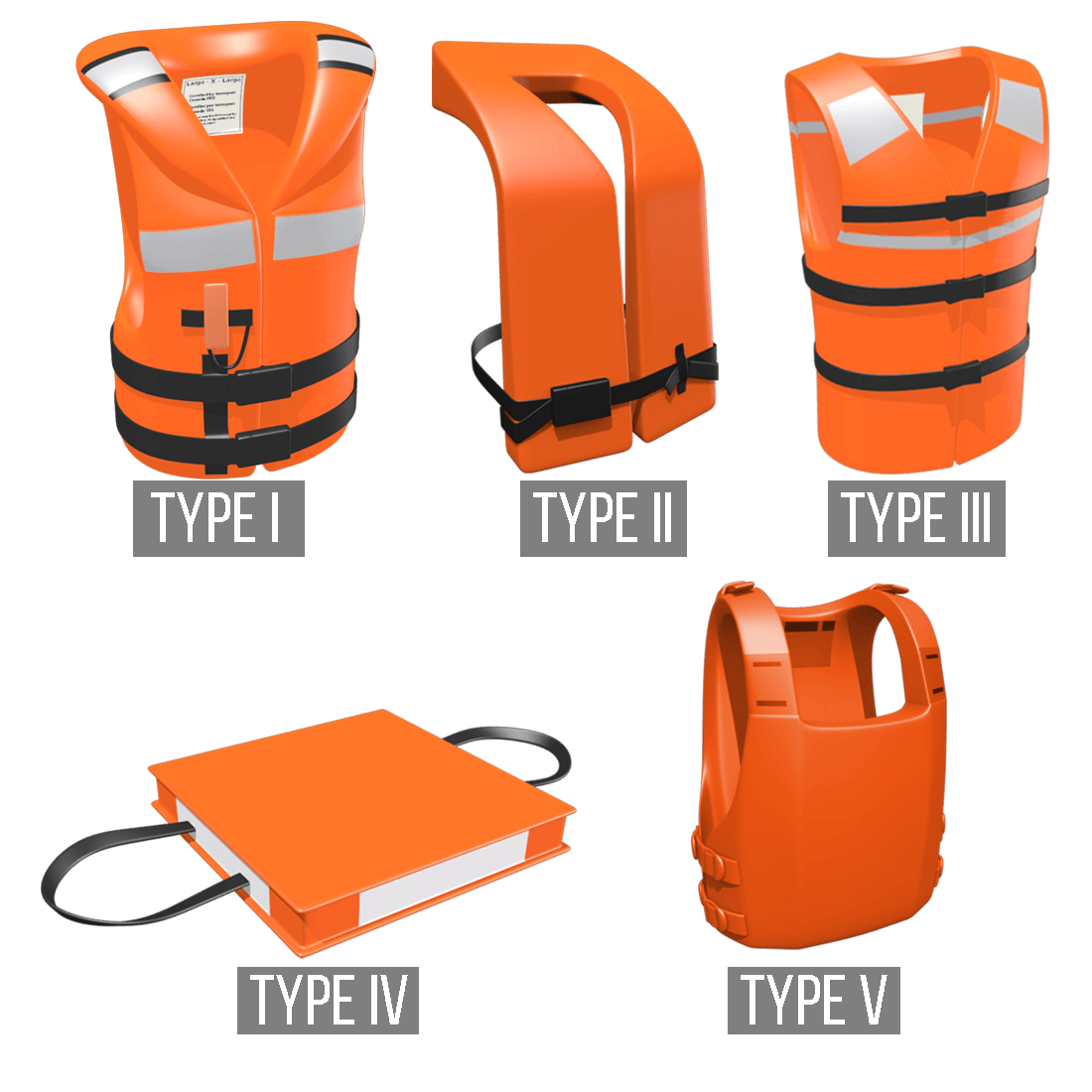
2. Understanding the Different Types of Life Jackets
Modern life jackets come in various styles and designs, each suited to a specific boating environment. In both Canada and the U.S., they must be approved by Transport Canada, the Canadian Coast Guard, or the U.S. Coast Guard. Let’s look at the main categories:
a. Standard (Foam) Life Jackets
These are made from buoyant foam and provide instant flotation. They don’t rely on inflation and are always “ready to go.” They’re ideal for:
-
Recreational boating
-
Canoeing or kayaking
-
Cold-water conditions
-
Young children or non-swimmers
Foam life jackets are durable, require little maintenance, and keep you afloat even if you’re unconscious face-up (especially in “lifejacket” models, not just PFDs).
b. Inflatable Life Jackets
These are lighter, less bulky, and more comfortable for extended wear. They inflate automatically upon immersion, manually by pulling a cord, or orally by blowing into a tube.
Inflatable life jackets are great for experienced boaters and anglers who need freedom of movement. However:
-
They must be worn to count as legal safety gear in most regions.
-
They require regular inspection and re-arming after inflation.
-
Not suitable for children under 16 or non-swimmers.
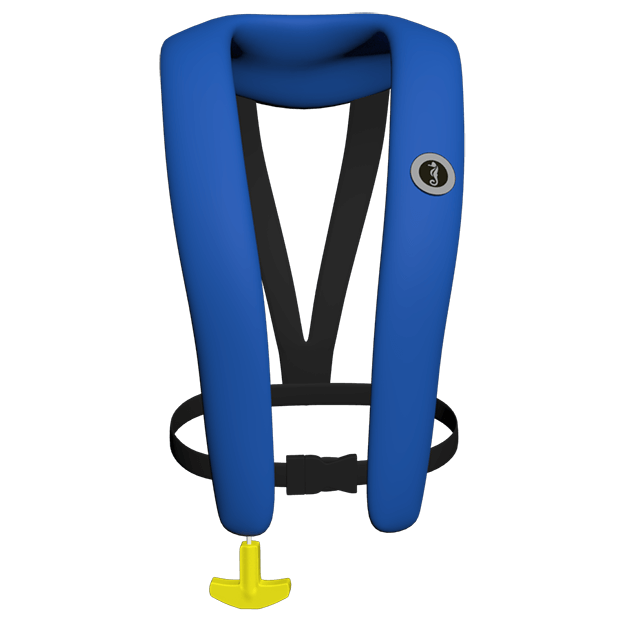
c. Hybrid Life Jackets
A combination of foam and inflatable components. They offer reliable buoyancy with added comfort. Though more expensive, they’re versatile and used by advanced or professional operators.
d. Specialty and Activity-Specific PFDs
There are specialized designs for kayaking, waterskiing, paddleboarding, or sailing. These include:
-
Kayak vests: High-cut armholes for paddling freedom.
-
Watersport vests: Snug fit to prevent ride-up during impact.
-
Sailing harness PFDs: Combine flotation with tether attachments.
Choose a model certified for the activity you most often perform — comfort and design directly affect whether you’ll actually wear it.
3. How to Choose the Right Size
A life jacket must fit the wearer’s body, not just their weight. The right size ensures comfort and keeps your airway above water.
For Adults
-
Check the manufacturer’s size chart (usually by chest measurement in inches or centimeters).
-
Try it on while wearing typical boating clothing.
-
Zip or buckle it fully and tighten all straps.
-
Raise your arms overhead: if the jacket rides up to your chin or ears, it’s too loose.
For Children
Kids grow fast, but never buy a size “to grow into.” A loose life jacket can slip off in the water.
-
Choose by weight category (e.g., under 30 lbs, 30–50 lbs, or 50–90 lbs).
-
Look for crotch straps and a grab handle on top of the collar.
-
Have the child test it in shallow water — it should keep their mouth and nose well above the surface.
For Infants
Infant life jackets include extra flotation behind the head, a padded collar, crotch straps, and a handle. They should allow the baby to float on their back with head support. Never take an infant boating without a properly fitted, approved life jacket.
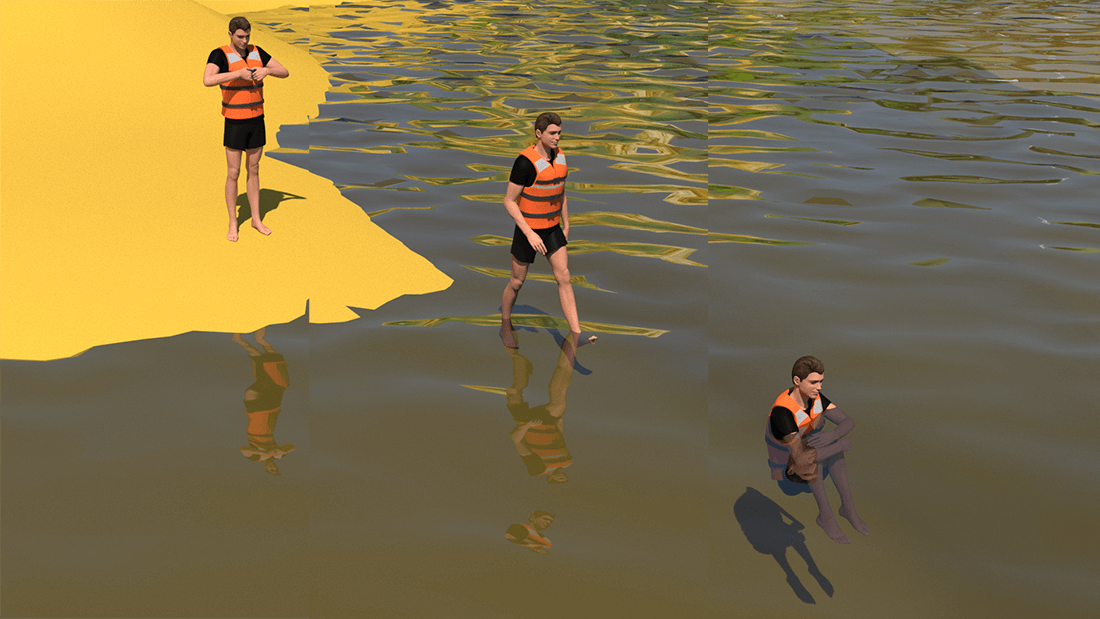
4. Testing the Fit
Once you’ve selected a jacket, it’s essential to test the fit and buoyancy.
-
Put it on correctly — fasten all zippers, buckles, and straps.
-
Tighten evenly from bottom to top.
-
Perform the “lift test”: Have someone pull up gently on the shoulders. If it moves above your ears, tighten further or try a smaller size.
-
In shallow, calm water, float on your back to ensure your chin and mouth stay above the surface without effort.
If you feel restricted in movement or the jacket chafes your arms or neck, test another style. Comfort is critical — if it’s uncomfortable, you’re less likely to wear it consistently.
5. Check for Certification and Condition
Every approved life jacket carries a label indicating it meets Transport Canada or U.S. Coast Guard standards. The label will specify:
-
Type or performance level (e.g., Level 70, 100, 150)
-
Intended use (inshore, offshore, paddlesports, etc.)
-
Weight and chest range
-
Care and maintenance instructions
Never use a non-approved flotation device such as a pool toy, inner tube, or cheap imitation. They are not designed for survival in real emergencies.
Inspect your jacket before each season:
-
Check fabric for rips, fading, or mildew.
-
Ensure zippers, buckles, and straps work smoothly.
-
For inflatables: test the CO₂ cylinder (not punctured or expired) and oral-inflation tube.
Replace any jacket showing damage or loss of buoyancy. Sun exposure, compression, and oil contamination can degrade foam over time.
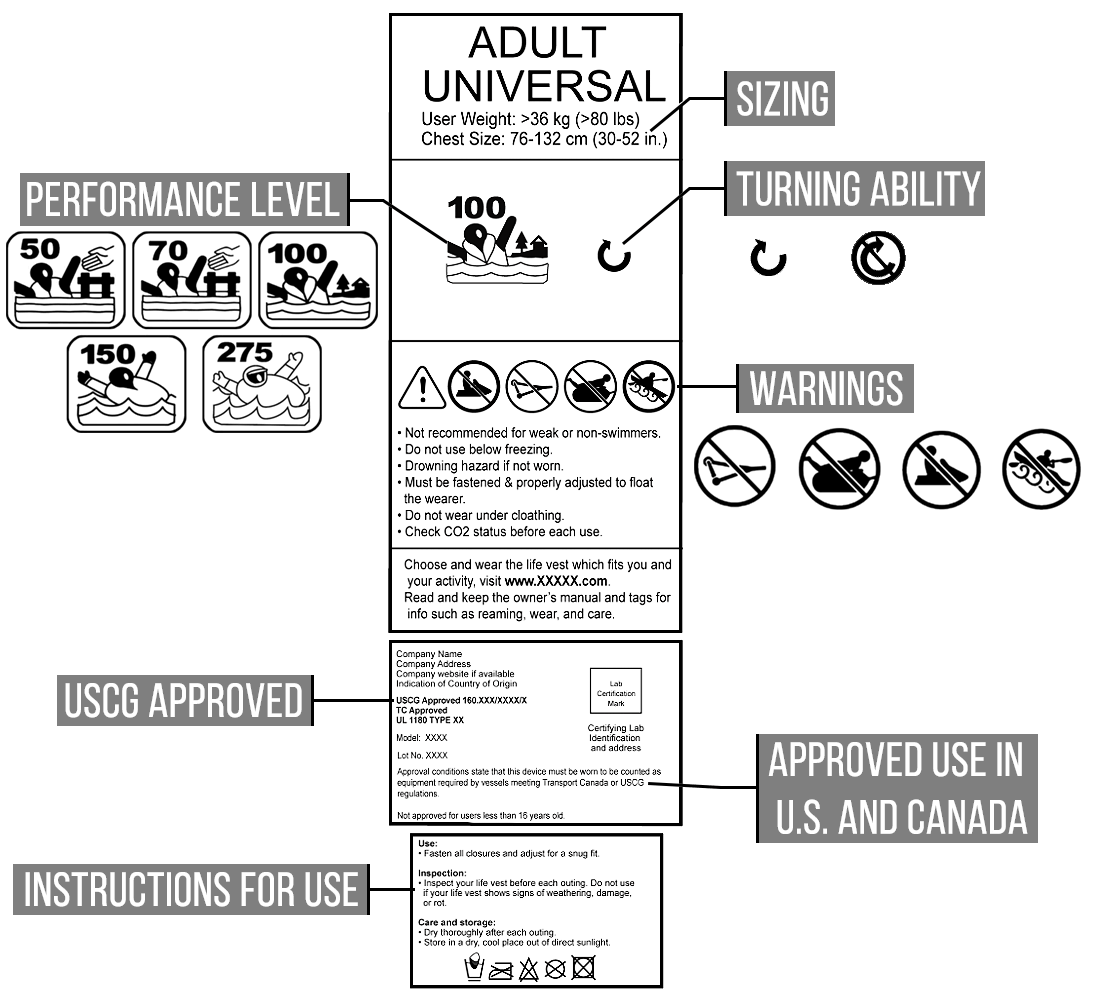
6. Comfort and Design Features
Modern life jackets are far more comfortable than older models. Look for features that improve wearability:
-
Adjustable straps at shoulders, waist, and sides.
-
Breathable mesh panels for ventilation.
-
Soft neoprene lining to prevent chafing.
-
Reflective patches and bright colors (orange, yellow, red) for visibility.
-
Pockets or attachment points for whistles, lights, or safety knives.
If you boat in cold climates, consider layering: wear thin, non-cotton base layers under your jacket to stay warm without bulk. Some cold-weather jackets double as flotation-rated coats.
7. Proper Wear and Maintenance
Owning the right jacket is only the first step — wearing and maintaining it correctly completes the safety cycle.
Wearing Tips
-
Always wear it whenever you’re on deck or underway.
-
Fasten every strap, buckle, and zipper. Loose straps can snag or reduce effectiveness.
-
Teach children to put theirs on independently, turning it into a routine part of boarding.
Storage Tips
-
Rinse with fresh water after exposure to salt or chlorine.
-
Dry in a shaded, ventilated area (never under direct sunlight or heat).
-
Store flat or hung loosely in a cool, dry place. Avoid compressing foam for long periods.
8. Life Jackets for Pets
Don’t forget four-legged passengers! Dogs tire quickly in rough water, and even strong swimmers may panic. Canine life jackets come with:
-
Bright colors and reflective strips
-
A sturdy handle on top for quick rescue
-
Adjustable belly and chest straps
Always fit it snugly and let your pet practice swimming in calm water first.
9. Common Mistakes to Avoid
Even seasoned boaters make errors that can compromise safety:
-
Using old or unapproved equipment
-
Not re-arming inflatables after use
-
Wearing it unzipped or loose
-
Tucking it under seats “just in case”
-
Assuming pool toys or cushions count as flotation devices
Remember, the best life jacket is the one you’re wearing when you need it.
10. Conclusion: Fit Equals Function
A life jacket is more than a legal requirement — it’s a proven lifesaver. Choosing the right one means balancing comfort, activity, and certification. Fitting it correctly ensures it can perform when seconds count.
Before your next outing, take a few minutes to inspect, test, and adjust each jacket aboard. Teach your crew, friends, and children to treat their PFD like a seat belt — something that’s always worn, never optional.
Boating should be fun, but fun is only possible when everyone comes home safely. A well-chosen, well-fitted life jacket turns that promise into reality every single time you cast off.